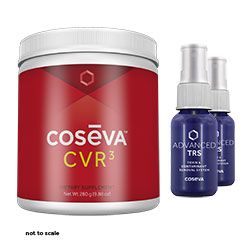
For endurance events such as marathons and ultramarathons, triathlons and Ironmans alike, carboloading foods can also come in handy before a long hike, race, or climb. These activities are energy-intensive and carboloading foods can prevent muscle fatigue. But, you shouldn't carboload before a long distance race or ultramarathon.
Carb-loading describes carboloading meals that are eaten before an endurance event. Do not eat foods that are high in glycemic. This can cause a decrease in blood glucose. High-protein meals are better than large pasta dinners, as they can improve your performance.
A healthy diet should have at least a few carboloading foods. Two to three days prior to an event is the best time to carb load. By doing this, your muscles will be well-rested and ready to work. Aim to consume 2.3 to 5.8 grams of carbohydrate per kg of body weight every day. You can eat crackers, chicken noodles soup, or other foods that are easily digestible if you're feeling anxious about your caloric intake.
During exercise, glycogen stores last about 30 minutes. By carbo-loading foods prior to a workout, you'll extend the period of time that glycogen is available. This will give you more energy for endurance and reduce fatigue. This can improve your performance during a marathon or an intense run. If you are concerned about your diet, you may donate any left-over carbohydrates to Missoula Food Bank. You won't regret!
Carbo-loading is not likely to be a benefit for professional athletes in long-distance events. The average basketball game, soccer game, or football game lasts approximately two hours. Running is a sport that involves standing for most of the time. Therefore, it's unlikely that runners will be able to reap the benefits of carbo-loading prior to a marathon. Marathoners who race in marathons can reap the rewards, as extra carbohydrate can help their bodies recover over the long-term.

A carbohydrate load is important when training for a marathon. Usually, marathoners should eat about four pounds more than they normally eat. This extra weight is a sign they have successfully carb loaded. These extra carbs will enable them to store threeg of water which will make them more competitive in the race. Because of this, they will be able to carry enough water and fuel throughout the event.
Carboloading can have nutritional benefits but there are also risks. If you're preparing for an endurance event, you should avoid eating foods high in refined carbohydrates. You will be more susceptible to experiencing an increase in your blood sugar. Furthermore, too many refined carbohydrates can cause unhealthy swings in your blood sugar. These spikes can make you feel tired and hungry, and can even lead to a serious condition called diabetes.
Carbo-loading foods should be low in fat and low in fiber. High-fiber foods might be beneficial but they should not be excessive. Too much fiber can cause stomach discomfort. You should limit your intake of fiber and increase the amount of carbohydrate you consume. You can add fat-free foods and snacks to your diet. These are often the same foods you would choose to eat if you were following a high-carbohydrate lifestyle.

Carboloading foods should have low-GI carbohydrates. High-fiber carbohydrate foods can cause problems with the digestive system. Because they are high sugary, this can cause digestive problems. If you're doing an endurance sport, you should limit your carbo-loading foods to low-GI ones. You should limit your intake and avoid eating more than you actually need.
It is important to know your caloric needs when carbo-loading. You should be aware of your caloric requirements to compete in an endurance event. The average person should consume around 35 grams of carbohydrates per kilogram of weight. A reminder that carbohydrates are not required for endurance is also important. In fact, they can cause stomach problems. It's important to understand what carbo-loading foods are before a marathon or ultramarathon.
FAQ
Which is the best way for you to learn how to cook?
Cooking should be something everyone can do. If you don't know how to cook, you miss out on some great food experiences. The first thing you need to do when learning to cook is to find a recipe that you like and follow it closely. You'll then want to practice small adjustments until you feel confident making the dish. Finally, try cooking for others. You will learn a lot and be able to show off your cooking skills.
What are the requirements to become a chef?
A bachelor's degree in culinary art is necessary to become a professional chef. A number of ACF tests will be required. After completing these requirements, you will be awarded a certificate that confirms your qualifications.
How much does culinary school cost?
Costs for culinary school vary depending on where you live, how long you study and which program you choose. Average tuition costs between $10,000 and $30,000. Most students graduate with approximately $20,000 in debt. Some programs offer work-study, grants, scholarships and grants.
Are there any free online cooking classes?
Many websites provide free cooking lessons. YouTube is a great place to search for cooking videos. You can find thousands of recipes on certain websites. You will need to pay a monthly subscription, but you can still try the site for free for 30 day.
How do you get hired as a Chef?
The first step toward getting a job as a chef is to complete a culinary arts degree. The next step is to join a professional association like the American Culinary Federation. This association offers certification exams as well as networking opportunities.
Which is the best method to store leftovers?
Tupperware containers can be used to store leftovers. These containers keep foods fresh and prevent odors from forming. They also keep foods warm for longer. Remaining food can be frozen in freezer bag. When freezing food, place the bag inside another freezer bag so that air doesn't escape. Once food has been frozen properly, seal it with a ziplock bag.
Statistics
- In the United States, the category is estimated at $23.2 billion annually and is growing faster than the market. (washingtonpost.com)
- The median pay for a chef or head cook is $53,380 per year or $25.66/hour, according to the U.S. Bureau of Labor Statistics (BLS). (learnhowtobecome.org)
- According to the BLS, chefs earn $58,740 a year. (learnhowtobecome.org)
External Links
How To
How to make the perfect omelet
Omelets are a favorite breakfast food of mine. But how do you make them perfectly? I've tried many recipes and different methods but none have worked. So today, I want to share some tips and tricks with you so you can make your own delicious and fluffy omelets every morning.
Before we start making omelets, let's remember that eggs are temperamental. The eggs must be fresh from an organic source and kept at room temperature until they are ready to be cooked. They must be kept cool, otherwise the whites will not form properly and the yolks may become runny. Your omelets will look strangely colored if this happens. If you're going to cook them immediately, it is best if the eggs are still warm.
You might also try separating the egg before adding to the pan. It is important not to allow any white to mix with the yolk as this could lead to the omelet becoming curdled.
You might burn the bottom of the egg if you place the egg directly on the stovetop. This could ruin the texture of your omelet. Instead, put the egg in the microwave for 10 seconds before putting it into the pan. The microwave heat will cook the egg just right without making it too hot.
Next, let's discuss mixing the eggs. When you mix eggs together, you want to beat them well. To do this, grab the bowl of the mixer and turn it upside down. Now shake the bowl vigorously. The egg will be thoroughly mixed in the bowl as the air is whipped.
Now it's time to have fun: pour the milk into the mixture. The first step is to pour half of the milk in the beaten eggs. Next, fold the eggs into the remaining milk. Do not worry if you see streaks of egg; they will disappear when the omelet is flipped.
After you have folded the eggs, heat the oil in a pan over medium heat. Once the oil has started to sizzle, turn the heat down to low. Once the oil starts getting hot, add 1/4 cup of butter to the pan and swirl it around to coat the entire surface of the pan. The lid should be carefully opened. Sprinkle salt in the pan. A pinch of salt will prevent your omelet from sticking in the pan.
Cover the pan once you have formed the omelet. Wait for the top to set. Use a spatula to flip the omelet or turn the pan upside-down. Cook the other side for about a minute. Take out the omelet and place it in a bowl.
This recipe works best with whole milk, but skimmed milk also works.